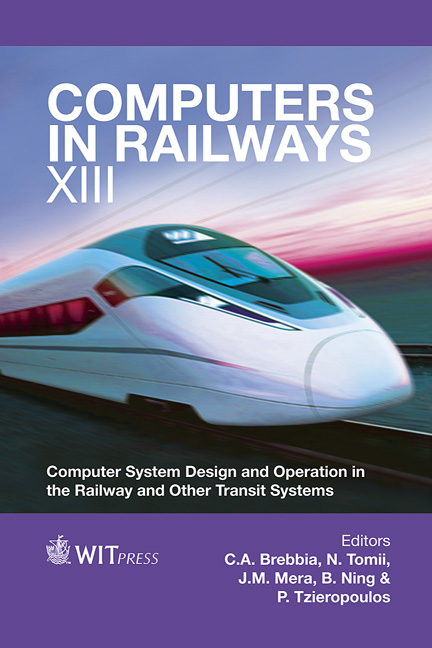A Simulation Tool To Support Signalling And Train Control Design For High-capacity Railways
Price
Free (open access)
Transaction
Volume
127
Pages
12
Page Range
99 - 110
Published
2012
Size
2,486 kb
Paper DOI
10.2495/CR120091
Copyright
WIT Press
Author(s)
D. C. Gill & A. Grostate
Abstract
New-generation signalling and train control systems, such as ETCS-level 2, distance-to-go ATC and many CBTC implementations, effectively transfer responsibility for safe train separations from track-based ‘fixed block’ sections to dynamic on-board calculations using data from speed sensors. Signalled line capacity, in terms of trains per hour, is thereby directly dependent on true train speed, rather than a single worst-case speed curve applied as the basis of previous generation fixed-block designs. The scheme design process therefore widens in scope to permit the optimisation of line capacity by the strategic adjustment of target driving speeds and, where applicable, the optimisation of train-detection equipment in relation to geographical headway criticality. To predict with accuracy the performance supported by a given scheme design, a validated simulation tool is applied that models the movement of trains under both steady-state and perturbed service conditions. The paper describes the development of such a tool and, as a case example, focuses on its application in supporting scheme-design for the re-signalling by Invensys Rail of the London Underground Victoria Line, under a contract with Bombardier Transportation. This replaces a pioneering 1960s fixed-block ATC system with a radio-based ATC system that applies dynamic distance-to-go calculations. Keywords: advanced train control, train simulation, railway signalling, ETCS, CBTC, ATC, DTG-R, ATP, ATO.
Keywords
advanced train control, train simulation, railway signalling, ETCS, CBTC, ATC, DTG-R, ATP, ATO





